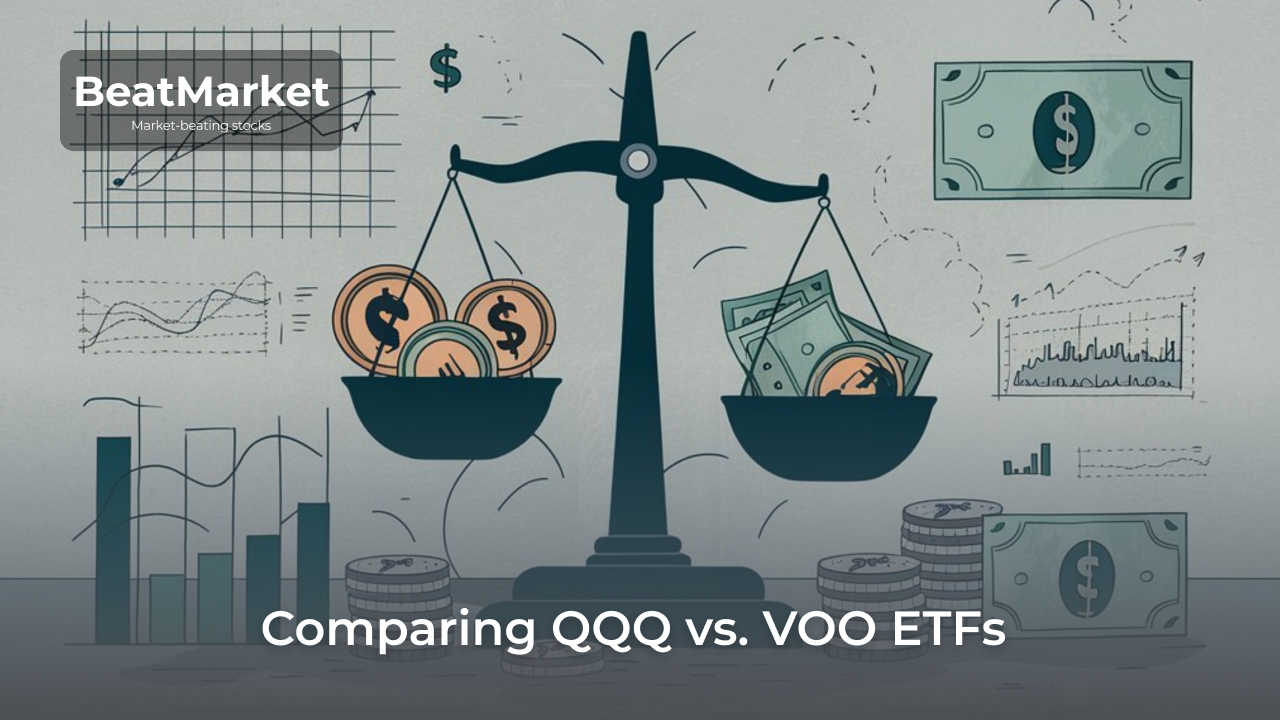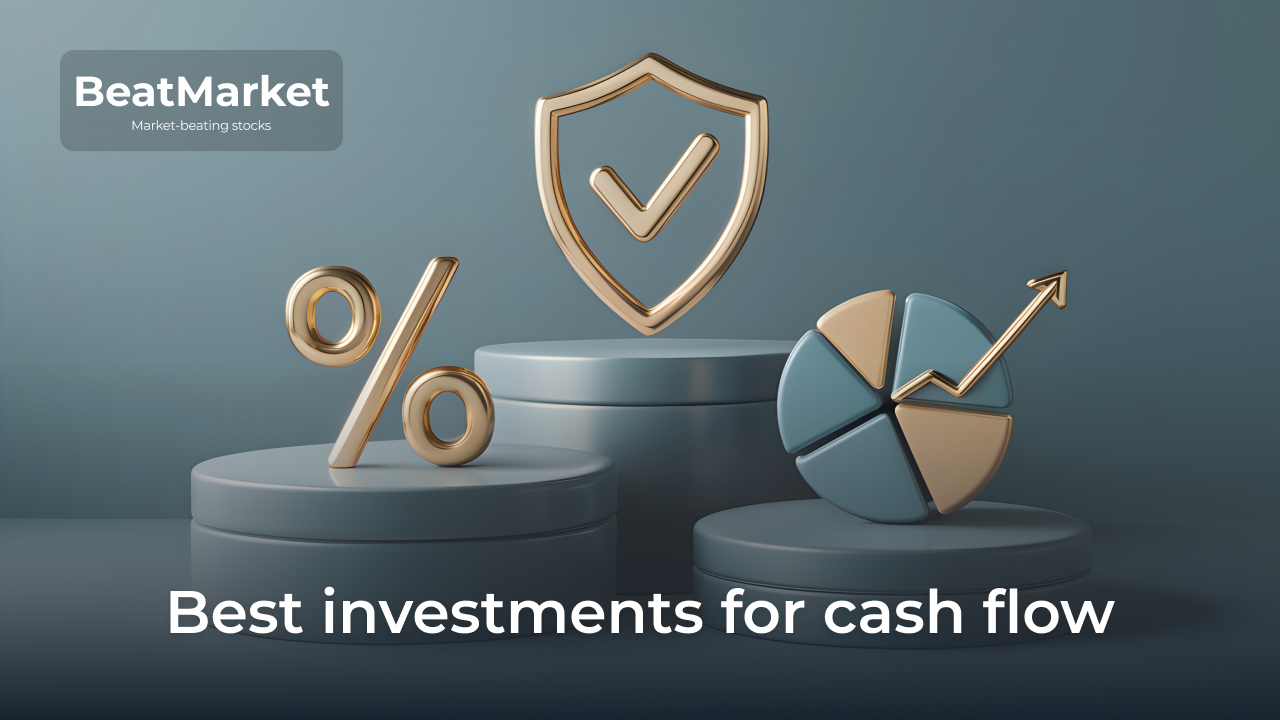Under portfolio theory, one of the main drivers of success is the use of proper asset allocation. Quotes of different securities move non-synchronously. Therefore, over time, the investment portfolio deviates from the parameters initially chosen by the owner.
Regular assets review allows you to identify these deviations in time and correct them. Let us tell you what an investment portfolio review is, what it includes and how to conduct it step by step.
Table of Contents
Introduction to Investment Portfolio Review
The portfolio review process comes down to analyzing its composition and key indicators. It is recommended to review the portfolio at least once a year. This will help the investor to make sure that they are following the most efficient path to their goal.
What to Expect From a Portfolio Review
The purpose of an investment portfolio review is to establish whether an investor’s asset mix meets the 3 parameters:
- a long-term financial goal;
- the owner’s personal risk tolerance;
- maximizing tax efficiency.
Through investment analysis, a person can see gaps in their strategy. It also helps to identify areas where improvements will significantly increase the return or reduce the risk of the portfolio.
Is that Necessity?
Investment portfolio review is considered mandatory for a person who wants to achieve their financial goals. Otherwise, there is a risk of losing the vector of movement and focusing on short-term fluctuations to the detriment of long-term results.
When an investor neglects to monitor the state of their portfolio, they may find that the risk of the latter has increased unnecessarily and is no longer appropriate.
Target Audience and Relevance
Regular portfolio review is necessary for all passive investors who use a diversification strategy. The more complex the capital structure, the more noticeable are the results of analyses and timely correction of mistakes.
That is why a comprehensive assessment of assets is recommended first of all for wealthy people. Still, this does not mean that it will not benefit an investor with an average or small portfolio.
The Basics of Strategic Investment Review
Asset allocation and tax efficiency are the main steps that an investment portfolio review includes.
Aligning with Financial Goals and Objectives
Passive investors usually set long-term goals, frequently for decades. But life can take its toll. Therefore, the expected investment results, not just the quantitative characteristics of the existing asset mix, should also be subject to regular review.
The key steps in the analysis are universal regardless of the size of investment portfolios:
- redefine your financial objectives;
- make sure that the asset allocation is still optimal in terms of achieving the objectives;
- check the selected financial instruments for efficiency (in terms of taxes and commissions).
Navigating through Market Volatility
Under the influence of market volatility, the ratio of different asset classes in the portfolio changes. In most cases, there is a bias in favour of stocks of growing companies to the detriment of bonds.
Well-timed rebalancing will help avoid the risks associated with this. It may seem inefficient to sell assets that have risen in price in order to buy less profitable assets. But investment statistics demonstrate that it makes sense.
For example, when interest rates rise, bond prices fall. This leads to a deviation from the asset mix originally selected. At such a moment, the investor gets an opportunity to build up fixed income positions at a favourable price.
Ensuring Tax Efficiency and Managing Expenses
Optimizing the associated costs is one of the most important tasks for the long-term investor. Over long investment horizons, the difference in taxes and commissions can have a significant effect.
To make sure the portfolio’s performance is tax-efficient, you need to check:
- contributions to retirement plans (401(k), IRAs, HSAs) have reached annual limits (for younger investors);
- minimum required distributions from retirement accounts have been received (for age-eligible individuals);
- no planned transactions subject to the wash-sale rule.
A portfolio checkup for unprofitable assets that no longer meet the investor’s goals and risk tolerance is also useful. When these assets are available, selling them can reduce the tax base for the year.
Numerous tools for analyzing a portfolio provide a way to account for the fees an investor pays. Tracking the ETF expense ratios and selecting funds with the lowest expenses is another step to maximizing return on investment.
In-depth into the Components of Portfolio Review
Let’s take a closer look at what makes up a portfolio review and break down the key concepts that affect investment performance.
Asset Allocation
Asset allocation is the ratio of different financial instrument classes in an investment portfolio. It is the way the capital is allocated which determines the returns and risks faced by the investor.
Portfolio theory is based on the idea that it is possible to find an “ideal” asset allocation. This is referred to as the proportions that best suit the investor’s objectives. For example, there are many combinations of financial instruments that can in theory produce a certain level of return. But only one of them will show minimum risk. This is the one that will be considered optimal.
The Essence of Diversification
The purpose of diversification is to reduce investment risks and the volatility of the total value of assets. There are several ways to diversify an investment portfolio. The most frequently mentioned is by asset class. In such a case, the investor selects the proportions of these financial instruments that are optimal for them: the proportion of such financial instruments:
- bonds;
- stocks;
- real estate;
- gold and commodities;
- alternative assets such as cryptocurrency.
Diversification is also required within each asset class. This can be done by industry, company capitalisation, etc.
Each of these financial instruments can be invested in directly or through funds. The latter allow you to get the maximum degree of diversification with a minimum of effort.
Aligning Allocation with Risk Tolerance
The risk level an investor is ready to accept is the main factor affecting asset allocation. Tools for analyzing an investment portfolio show its volatility, Sharpe ratio, etc. The investor can change the ratio of risky to conservative assets to bring these parameters to an acceptable level.
Also, the set of financial instruments used should protect against the most probable market risks. For example:
- interest rate risk is offset by bond investments with variable yields;
- potentially falling portfolio value is reduced by investing in developed market stocks and bonds with high credit quality.
Global Diversification
It is possible to diversify a portfolio by asset class within one stock exchange. Global diversification means that an investor deals not only with securities of companies in their homeland, but also with foreign companies.
Overcoming Home Bias in Investments
Most investors tend to have a so-called home bias. This is reflected in the fact that they invest most of their capital in companies of their own country.
This approach is risky, as there is no currency diversification in the portfolio. In this case, the investors expose themselves to the maximum country risk.
Exploiting International Market Potentials
Emerging markets are theoretically capable of showing higher returns. Investments in foreign companies increase the efficiency of the investment portfolio and reduce the risks associated with the deterioration of the economy of a particular country.
Foreign financial markets are proper for both fixed income diversification and stock portfolio expansion. The most profitable way to invest in them is through mutual funds and ETFs. Especially when it comes to bonds. They make it easier to work with stocks, too. For example, a fund tracking the MSCI All Country World Index allows you to invest in all countries except the U.S. in one transaction.
But one should not forget that such assets carry their own risks (currency, political, etc.). Global diversification is a way to increase profitability and reduce the dependence on the US dollar in your portfolio. But this is not a universal recommendation for every investor.
Managing Stock Concentration Risk
This problem is faced by investors whose portfolios are heavily skewed towards a particular company. This can lead to significant losses when its business encounters problems.
Regular investment portfolio review helps to identify such positions in time and rebalance the assets.
The Perils of Over-Concentration
Overconcentration of one stock/sector can be detected by using portfolio analysis tools. Such services help to track:
- the total value of stocks in all investor’s accounts;
- the share that is attributable to different sectors of the economy (some tools support analysis of distribution by country, level of companies’ capitalisation, etc.);
- the proportion that is attributable to each separate company.
Some of these platforms also have a useful feature called fund cross-analysis. It helps to identify funds in an investment portfolio whose net assets are predominantly made up of the same stocks.
Implementing Effective Diversification Strategies
One of the components of an investment portfolio review is a comparison of the existing asset allocation with a model asset allocation. The latter can be a self-compiled “ideal portfolio” or various recommendations from well-known investors. A few examples:
- a combination of bond funds and stock funds in 40/60 proportions;
- Buffett’s “will” portfolio, in which the portfolio consists of 90 per cent stock funds and the rest short-maturity government bonds;
- Brown’s “perpetual” portfolio, which contains equal proportions of stocks, gold, short-term and long-term bonds.
Another way to find the most efficient model portfolio is to use services that offer asset allocation based on risk tolerance, deposit size and investor preferences.
Some portfolio analysis platforms not only allow you to spot deviations from the investment strategy chosen. They provide recommendations on specific transactions that can bring the asset allocation back to the benchmark.
Equity Factor Analysis
Portfolio construction based on factor analysis is one of the most modern investment strategies. It was only formed in its final form in 2014, when a model of 5 valuation parameters was proposed.
It has 2 advantages over standard diversification paths:
- lower correlation between quotations of companies selected by various factors (compared to asset classes);
- getting rid of attachment to capitalisation (most popular indices take it into account, as a result, the largest issuers account for 30% or more of the weight).
The disadvantage is that there is no factor strategy that is equally profitable in every economic situation. As with any other diversification method, a long-term investor should add assets for different economic cycles to their portfolio.
Understanding and Leveraging Equity Factors
Factors are certain attributes that a company may possess. Through statistical analyses of past performance, it has been observed that certain groups of issuers show returns above the market average. The qualities that companies in this group possess are the basis of factor investing.
Examples of the most popular factors:
- capitalisation (small cap stocks tend to show higher returns than the broad market);
- momentum (it is believed that stocks that have risen rapidly in value over the past few months will continue this trend in the near future);
- quality (3 metrics are evaluated – net income volatility, ROE, debt size);
- value (this is the classic idea of looking for issuers with a market price below fair value – so called value stocks).
You can implement a factor strategy on your own by investing in individual stocks or by using a mutual fund or ETF. Many investment portfolio evaluation tools allow you to analyze your investment portfolio from a factor perspective.
Factor investing applies not only to stocks, but also to fixed income investments and variable interest rates bonds. In this case we speak about such elements of evaluation as:
- duration;
- inflation protection;
- credit risk.
The Fama and French Multi-Factor Model
The essence of this model is that it determines future stock returns based on 5 factors:
- market risk;
- issuer capitalisation;
- intrinsic value (reflects the current undervaluation of the stock);
- profitability (return on equity);
- capital investment of the company.
Thus, the companies for which the maximum potential profitability calculated on the basis of these indicators will be maximized are selected for the investment portfolio.
Other factor investing strategies may rely on only one factor or make a sequential selection (first selecting leaders for the first factor, then analyzing them for the next factor, etc.).
Practical Steps to Conducting a Portfolio Review
In practice, an investment portfolio review boils down to the 4 steps listed below.
Setting Clear Investment Objectives
The investment objective should be formulated as a measurable parameter. It may sound like:
- accumulation of a certain amount of money by a fixed date;
- creation of passive income of a certain amount by a fixed date.
The plan of frequency and size of contributions to the brokerage account is an obligatory element of setting a financial goal. It is prepared on the basis of the amount required, investment time horizon and expected portfolio profitability.
In the second case, in addition to the plan of contributions, it is desirable to make a breakdown into several stages of achieving the goal. This is necessary so that in the future, when reviewing the portfolio, it can be quickly ascertained that the investor is moving towards the goal at the intended pace.
Analyzing Current Portfolio Composition
At this stage, the person determines whether the previously chosen investment strategy is consistent with the formulated goal. This is especially important when adjustments have been made to financial plans.
It is necessary to evaluate both the total expected return and the contribution of individual assets. In addition, it analyzes:
- business indicators of individual companies for stock investors;
- credit ratings of bond issuers;
- matching the selected funds to the benchmark;
- prospects of alternative assets included in the portfolio, etc.
When a company or asset no longer meets the financial targets, it should be eliminated during the rebalancing process.
Identifying and Mitigating Potential Risks
This step is performed using portfolio analysis tools. As part of this step, the investor:
- determines which parameters should be evaluated (e.g. asset allocation, volatility, risk, etc.);
- examines the portfolio breakdown by assets, economic sectors and other parameters set in the first stage;
- selects criteria for which the existing portfolio deviates unacceptably from the model one.
Implementing Adjustments and Rebalancing
This is the final step, during which the investor eliminates the portfolio deviations from the model portfolio identified in the previous step and gets rid of assets that no longer fit the strategy.
At the end of the investment portfolio review, a date should be set for the next one. The recommended frequency, depending on the investment timeframe and aggressiveness of the strategy, is from once a year to once a quarter.
Additional Resources and Guidance
A private investor cannot devote all the time to studying the stock markets. That is why even a person with extensive experience of working on the stock exchange sometimes needs the help of a professional. You can get it on the BeatMarket platform.
Seeking Professional Financial Advisory
A beginner in the world of investing or a person who has already had unsuccessful investment experience can undergo personalized training. As part of it, they will learn the basics of trading on the stock market and how to build a long-term stock portfolio.
Utilizing Financial Tools and Platforms
There are a huge number of platforms that offer portfolio analysis tools and investment recommendations. BeatMarket is rightfully among the leaders. The service allows you to:
- analyze your portfolio in terms of asset allocation, dividend yield, potential capital growth from the growth of quotes of selected companies and many other parameters;
- to obtain a rating of companies based on our own system (it allows us to find leaders that will show above-market returns in the next 6-12 months);
- create a benchmark asset allocation based on the investor’s conditions;
- receive investment recommendations to increase the dividend flow, etc.
The cost of asset selection services is lower than that of financial advisors. And their efficiency is confirmed by the statistics collected over the period of work.
Engaging in Continuous Financial Learning
The BeatMarket platform organizes webinars for investors every week. There are also many training videos on the platform, which will be useful for people with different levels of knowledge.
Key Takeaways
The main things to remember are:
- An investment portfolio review is essential for every person who sets long-term financial goals. It allows you to make sure that the investor is really moving towards achieving them.
- The review includes analyzing the key indicators of the portfolio – asset allocation, current returns, risk level.
- The main objective is to find gaps in the strategy that reduce the probability of achieving the financial goal and eliminate them.
Moving Forward with Informed Investment Strategies
Before you start analyzing your portfolio, you need to formulate a financial goal. The next step is to determine the strategy that will allow you to achieve it. It is not possible to move intuitively in the world of securities.
Unless a clear strategy is developed, an investor may be distracted from achieving the goal in pursuit of short-term profits or simply not realize that the assets chosen will not achieve the intended result.
The Continuous Journey of Portfolio Management
Building a portfolio of securities once and leaving it behind for many years is not an effective strategy. Success in long-term investing is tied to 2 components:
- financial discipline and regular replenishment of the investment account;
- rigorous planning with regular assessments of how well the actual portfolio matches the benchmark portfolio.
FAQ
What are the best investment portfolios?
The best investment portfolio for a particular person is the one that matches their risk tolerance and yields the required return. But in general, for a beginner and passive investor, the best option is a set of exchange traded funds.
What is the process of portfolio review?
The portfolio review process consists of several steps. The key step is to determine its current parameters (asset allocation, returns, etc.). This is followed by a comparison of these parameters with those that the benchmark portfolio should have for the investment strategy adopted. The final step is the elimination of discrepancies.
What is the average annual return on an investment portfolio?
The average annual return of a portfolio is highly dependent on its constituent assets. For example, the S&P 500 Index has an average annual return of about 10% over a horizon of decades. A portfolio made up of growth stocks and small-capitalisation companies can yield significantly higher results. A conservative portfolio with a high proportion of investment grade bonds – will show a lower return. The same is true for risk.
What is the annual review of a portfolio?
An annual portfolio review is an analysis of whether the existing asset mix is capable of leading an investor to their bottom line. The next step is to make adjustments to the portfolio or strategy to better meet the objectives.







